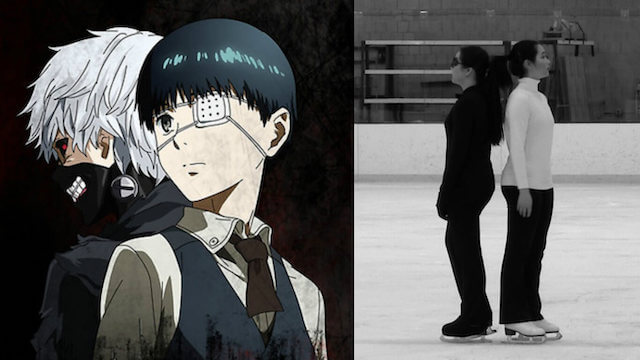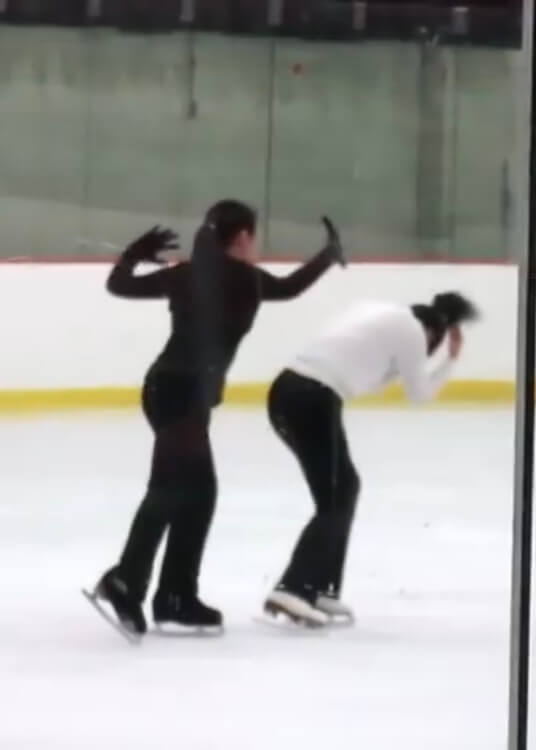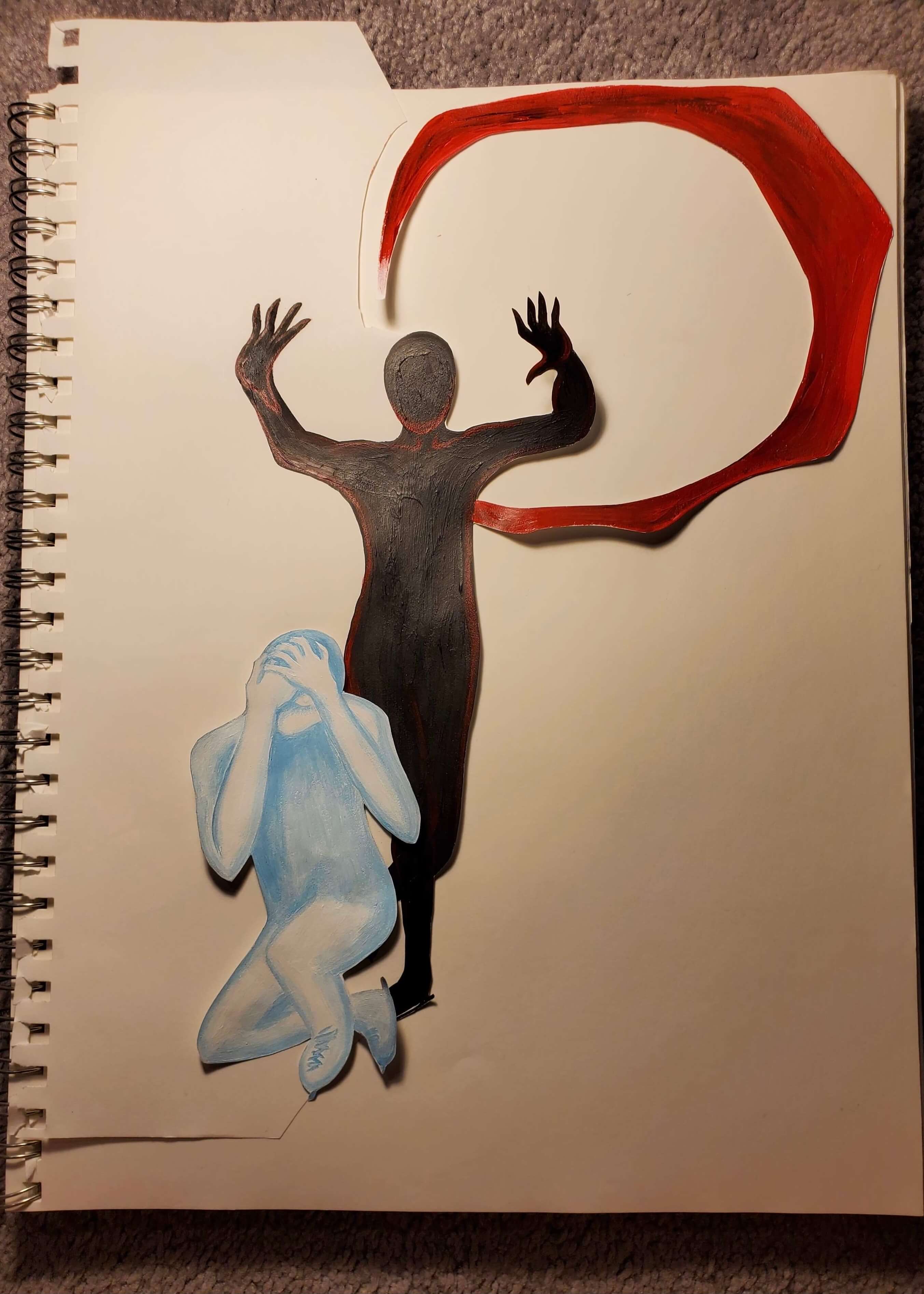Tokyo Ghoul on Ice
A journey on the scary, yet invigorating path towards self-acceptance
We have all, at some point in our lives, experienced self-discovery and self-doubt. We seek answers to our inner thoughts and emotions, learn things about ourselves that we are initially afraid to believe, and hopefully come to embrace a truer version of ourselves. Diane and Sabina journey on the oftentimes scary, yet invigorating path towards self-acceptance.
Behind-the-scenes of ~Unravel~
Written by Diane Zhou and Sabina Chen
Published in July 2021
Unraveling the Uncomfortable
We grow up with values instilled by family, culture, education, media, and other influences that surround us. Sometimes we may feel thrown into circumstances in which the best course of action seems to clash with our fundamental values. Perhaps we believe that lying is immoral, yet telling the whole truth would only worsen the situation. Maybe we feel obligated to never say no to helping others, but end up resentful if we do not set boundaries. When we cannot find a way out of doing things that leave us feeling ashamed or regretful, we may create parts of ourselves that we want to deny, hide, or run away from.
How can we deal with these parts of ourselves? Is it possible to make peace with our conflicted feelings, or will we always feel underlying discomfort in our actions and decisions? These questions are explored in Tokyo Ghoul via the main character Ken Kaneki.
“It’s better to be hurt than to hurt others. Nice people can be happy with just that.” ~ Ken Kaneki
Kaneki adopts this ideology from his late mother who preached about always putting others before oneself. However, a traumatizing and life-changing accident turns Kaneki into a half-ghoul, causing him to question his previous assumptions. He is thrust into a cutthroat kill-or-be-killed world in which ghouls fight both each other and humans for the privilege of staying alive.
Reluctantly, Kaneki realizes that if he continues to always choose getting hurt over hurting others, he still ends up hurting others when he is unable to protect those he loves. As this revelation contradicts his fundamental ideology, he struggles to adapt to his situation.
“There are times when you have to give up on one thing to preserve the other. Your mother couldn’t. That isn’t kindness. That’s just being weak.” ~ Rize Kamishiro in Ken Kaneki’s visions
With this mindset shift, Kaneki eventually faces his ghoul half, the part of himself that he had previously been suppressing. Facing these uncomfortable parts of ourselves is often a process we also need to go through in order to embark on the path toward self-understanding and self-acceptance. This emotional journey is what we explore in our program.
Creative Process
Music
Our primary inspiration for this program was “Unravel” by TK, the opening song of of Tokyo Ghoul (Season 1). The lyrics and mood evoke the tension and internal conflict we wanted to express.
Oh, won’t you tell me? Please just tell me
Explain how this should workWell now who could it be, that lives inside of me?
I’m broken, lying helpless, shattered
Surrounded by the worldAnd yet, you’re smiling bright
Completely blind to life
The confusion expressed in the lyrics reflects the confusion Kaneki feels as a former human who suddenly became a half-ghoul overnight. He fears his ghoul side and has difficulty accepting his new body and identity. Similar to how the full lyrics of the song do not end in a resolution, our program does not propose any particular solution. Instead, we focus on the journey of self-exploration.
As “Unravel” is an extremely iconic song, sifting through all of the different versions that have been created was also an adventure in itself: from the original song, to faithful covers, to English interpretations, to instrumental renditions. Ultimately, we decided to skate to the piano arrangement of “Unravel” by Animenz. We hoped that by using an instrumental version rather than the original song in Japanese, our program would attract a wider audience outside of the anime community. There are also many amazing English covers, but we wanted to allow our skating itself to communicate the meaning behind the song.
Style
Our model for the style of this program came from Kayla and Kupono’s contemporary dance to “Gravity“ from So You Think You Can Dance (Season 5). In this dance, Kayla portrays someone who is struggling with addiction, and Kupono represents the addiction that Kayla is constantly drawn back towards. We were inspired by how the movements in this dance brought out a lot of raw emotion, and tried to emulate the dancers’ intense interactions in our skating. We also adopted the idea of presenting the part that someone is struggling with as its own separate character in the program. This allows the audience to more explicitly visualize the concept of internal conflict.
Another inspiration was J.T. and Robert’s contemporary dance to “The Mirror” from So You Think You Can Dance: The Next Generation (Season 13), in which Robert plays a character who feels lost in life and J.T. appears as the character’s younger self. The dance features many mirrored movements and meaningful moments of eye contact that reinforce the portrayal of a person deeply reflecting about his own life. In order to more effectively depict a character wrestling with himself as opposed to someone else, we incorporated mirroring and intentional eye contact into our choreography as well.
Choreography
Our story breaks down internal conflict into five stages: fear, avoidance, coexistence, confrontation, and acceptance. We find parallels between these stages and Kaneki’s ordeals in Tokyo Ghoul. The choreography depicts the human side of Kaneki, represented by Diane, grappling with his newfound ghoul side, represented by Sabina. While our choreography is open to interpretation, we explain our thought process behind the choreography in the slideshow below.
Play each video to view the section of the program corresponding to the description on the slide.
Costume
Our costumes were based on the outfits that Kaneki wears when he is a human versus when he is a ghoul. We wanted a very clear visual dichotomy between the two characters, with Diane representing “human” Kaneki and Sabina representing “ghoul” Kaneki.
As a human, Kaneki wears a white shirt with a vest along with a white surgical mask to cover his ghoul eye. Diane simplified this outfit to just a white shirt with no mask, as humans in the world of Tokyo Ghoul typically do not wear masks.
As a ghoul, Kaneki wears a black shirt and a black mask that covers his human eye. Sabina likewise went with a black shirt for her costume. As many ghouls in Tokyo Ghoul have a signature mask, Sabina also wore a black masquerade mask. In our program, the mask acts as a symbolic prop. Diane taking the mask off of Sabina and finally looking her in the eyes is a reference to Kaneki finally facing his ghoul self as well as a more general gesture of self-acceptance.

With a white top for Diane and a black top for Sabina, but black pants for both skaters, our costumes depict two opposite sides of the same person.
Reflection
Cover Art
For the cover art of this program, we commissioned fellow figure skater and friend Flora Su. Flora had watched us perform “Unravel” live and it had a lasting impression on her. We had also been following Flora’s art throughout the years and especially admired her pieces that featured a red, black, and white color scheme because they evoked a sense of internal strife. With mutual respect for each other’s creative endeavors, we thought it would be a great opportunity to work together on this cover art for Anime on Ice.
We chose a pose near the end of the program as a base for the position of the characters. Rotating the perspective to be straight-on and adding vividly colored kagune enlivens this moment of intense intimidation and solidifies the reference to Tokyo Ghoul.


The reference pose from our skating program and a work-in-progress version of the cover art are shown above. Scroll to the bottom of this page to see the final result of this painting. Flora also shared her thoughts about working on this piece on her DeviantArt page.
Final Thoughts
Revisiting “Unravel” four years after we skated it has had its tricky moments. The anime it is based on, the personal experiences we have had that make it relatable, and the concepts we tried to express are complex, nuanced, and deeply emotional. Befittingly, “Unravel” is exactly about the struggle to face such uncomfortable feelings. When words fail us and mulling over things in our head proves fruitless, art — including figure skating and painting — is another way to address these difficult internal thoughts and emotions.
Copyright 2023 Anime on Ice • Website designed and maintained by Diane Zhou and Sabina Chen


